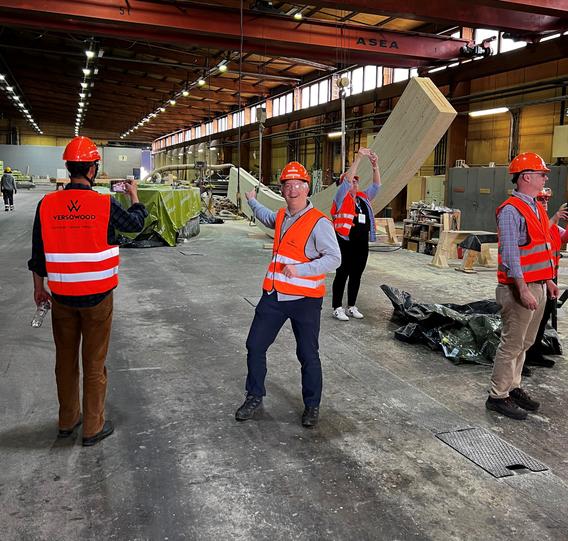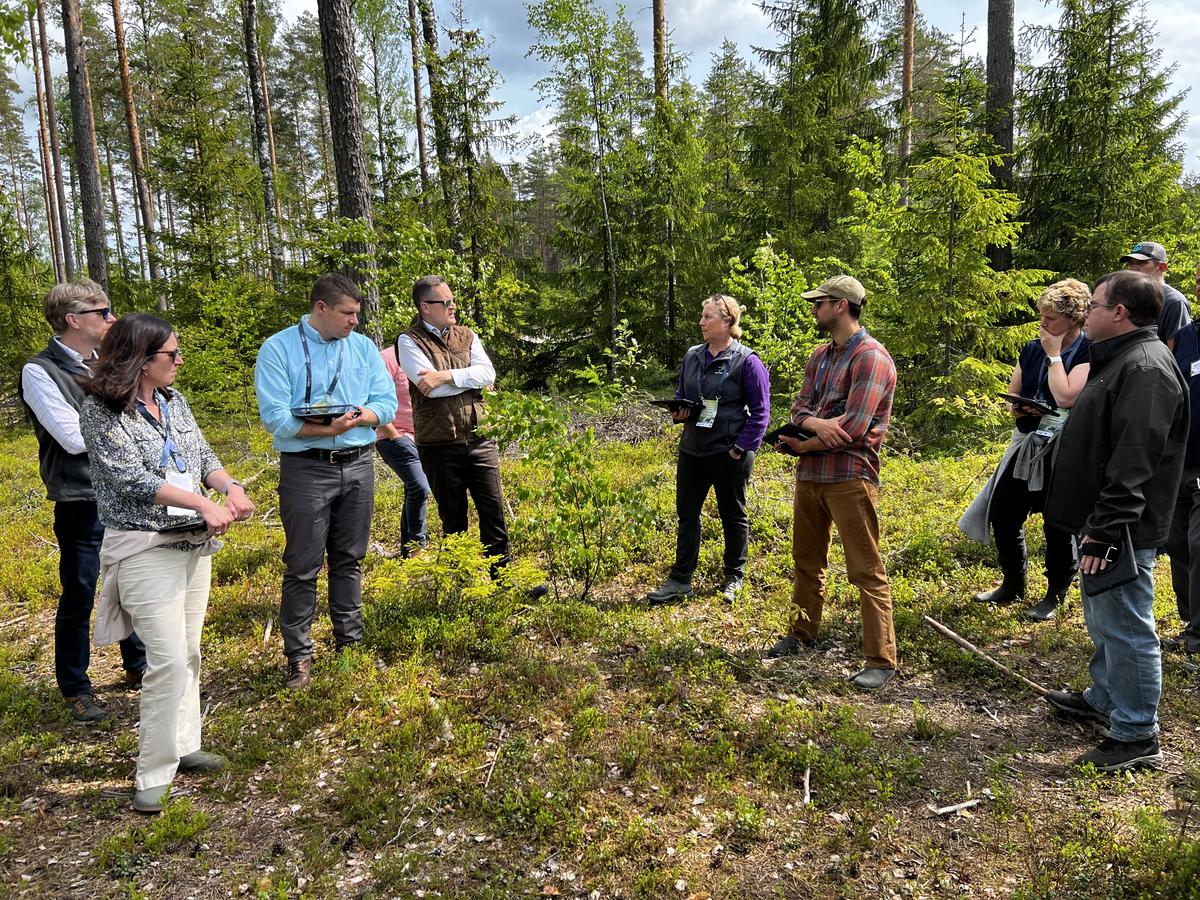Minnesota has more in common with the Nordic country of Finland than its namesake northern community and the popularity of saunas.
The state is smaller than Finland, but with similar natural resources. Populations are about the same – Finland has about 5.5 million people; Minnesota, some 5.7 million. And Gross Domestic Product is comparable, with Finland at almost $300 billion and Minnesota at about $350 billion annually. Even the seasons are similar.
“If I had fallen asleep and suddenly woke up in Finland, I’d think I was still in Minnesota,” said Tim White. “Driving around, I was struck by how similar the forests and industries are to what we have here.”
White, NRRI’s Director of Partnership Development, and John Du Plissis, Forest and Land Research Group Leader, traveled to Finland with a contingent of U.S. university researchers and agency leaders in late May to build mutually beneficial partnerships. The states of Washington, Michigan and Maine were well represented which also have similar natural resources to Finland. Their tour bus focused on forest-based industries and management.
Du Plissis, a forest silviculture expert, was impressed by Finland’s forest products industry and the diversity of their product lines from one plant.

“At VersoWood, we saw five different product lines that use the entire tree,” said Du Plissis. “And we saw a presentation by Stora Enso that identified seven different products made at one facility. Their goal is to utilize as much of the tree as possible and doing this at one facility allows them to minimize waste and maximize profit.”
So while there are innovations that could translate well to address some of Minnesota’s challenges, Minnesota and the other states have a lot to offer Finland, too. Opening up markets in the U.S. and lessening their dependence on Russian markets are among their priorities.
The connections made – both with Finnish and U.S. organizations – was of the highest value to White and Du Plissis, who came home with an arsenal of new partnering opportunities.
FinnCERES, for example, is a research partnership hosted by the Academy of Finland, VTT Technical Research Center, and Aalto University. Their goal to develop novel, sustainable uses of natural resources to reduce reliance on fossil-based materials aligns remarkably well with NRRI’s goals.
“NRRI needs to be involved with FinnCERES, or at least very aware of what they’re doing,” said White. “They’re making biomass-based textiles and plastics… So maybe we can figure out how to bring their science here and use Minnesota resources.”
NRRI leadership is already meeting regularly with leaders at Luke (pronounced loo-kay), the Natural Resources Institute of Finland, to identify research partnership opportunities in tree lignin materials, biochar and bio-based adhesives. Their institute is also very interested in NRRI’s new, fast-growing Poplar tree variety to provide feedstock for their expanding bio-based product portfolio. Luke is also partnering with NRRI on wildlife research to reduce animal and vehicle collisions on roads.
“With so much in common, our challenges in preparing for the economy of the future are similar,” said White.
“Rather than reinventing the wheel with our small group of people, think of how much more impactful we could be if we work across areas of similarities to get a bigger bang,” Du Plissis added.
White and Du Plissis are working with NRRI’s Senior Leadership Team to prioritize research opportunities and develop the next steps.
